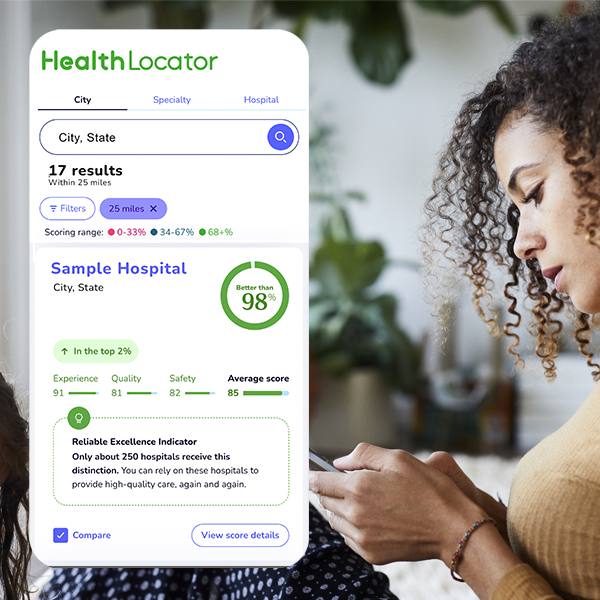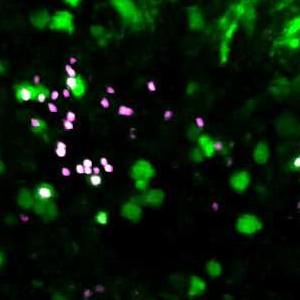-
Sharing Mayo Clinic: Learning to live with epilepsy
The first time Tehya Mrotek had a seizure during class, she had just begun high school. Most of the faculty and staff at Stewartville High School didn’t know how to respond to Tehya’s condition.
The school nurse recognized what had happened, however. The nurse explained it to Tehya when she regained consciousness from her tonic-clonic episode. But Tehya’s teachers and support staff weren’t very familiar with epilepsy and were not equipped to administer seizure first-aid, says Tehya’s mother, Tamra Mrotek. That was six years ago.
Within three years, not only had all of Tehya’s teachers and administrators become proficient in epilepsy education, but the town of Stewartville had received certification as a Seizure Smart Community from the Epilepsy Foundation of Minnesota.
“I know there are parents who will change schools for their child’s well-being, but it’s more beneficial for the school to be well educated,” says Tamra, a timekeeping specialist at Mayo Clinic’s Rochester campus.
The path to becoming seizure smart wasn’t easy, Tamra and Tehya say. Understanding a diagnosis of epilepsy, which occurs in approximately 1 in 26 people, and managing the disease present a huge learning curve. But thanks to their supportive Mayo Clinic team, a proactive school nurse, and an engaged advocacy group, Tehya’s school and entire community were ready to take on the challenge.
A lifelong diagnosis
When Tehya had her first seizure at school, her father, Curtis, got the phone call. He drove her to the Emergency Department at Mayo Clinic Hospital, Saint Marys Campus. To pinpoint what exactly had transpired, Tehya’s physicians administered an electroencephalogram, or EEG, which monitors electrical activity in the brain. When the results came back normal, Tehya underwent an MRI, which revealed the problem. Tehya's seizures were a symptom of something that traced back to before she was born.
The human brain is made up of gray and white matter. The gray matter is on the outside part of the brain, called the cerebral cortex. While in utero, the gray matter in babies’ brains forms around fluid-filled pockets, called ventricles, situated deep within the brain. The gray matter gradually migrates to the outside part of the brain, according to Mayo Clinic pediatric neurologist Katherine Nickels, M.D.
“Sometimes this process doesn’t go correctly, and the child has areas of gray matter where they don’t belong. This is what happened with Tehya,” Dr. Nickels says. “She has a small area of gray matter next to her left lateral ventricle, and that area causes seizures.”
Tamra says that at the time of her daughter’s diagnosis, she knew nothing about epilepsy — what it was, the different kinds of seizures, how to treat it. So she grabbed an armful of material from the doctor’s office and took to the internet to find answers.
“The more they know, the more knowledge they have, the more experience they have, and it’s safer.” — Tamra Mrotek
“I wanted her to be better. I wanted this gone,” Tamra says. But the family quickly learned the condition was not something Tehya would outgrow. She would need medication to control seizures for the rest of her life.
Under the guidance of her care team in Mayo Clinic’s Division of Child and Adolescent Neurology, Tehya was prescribed the medication levetiracetam to help control her seizures. Over the next 14 months, as Tehya’s team gradually increased the amount of medication to more effectively control the seizures, their frequency diminished. When seizures did happen, Tehya says it felt like her senses were being switched off.
“With a full seizure, my eyes start to feel like they’re going back first, and I can cry out for help in just a second. Then I can’t talk, and I can’t feel anything. I can tell everything from the neck down is starting to be numb and tingling, and then I’m just out,” she explains.
In 2013, Tehya began working with Dr. Nickels, who added a second medication, called lamotrigine, to her treatment plan. Tehya continues to take her medications daily, but since January 2013 she has been seizure-free.
Managing more than just medication
While Tehya’s body was dealing with a serious medical condition and adapting to her treatment, she continued attending school. She received an individualized education plan, which lightened her workload and time in class. The plan, however, did not call for school staff to receive education about epilepsy or how to respond to a seizure.
“We wanted to have someone come in and actually talk to the entire student body about epilepsy and what a seizure is,” Tamra says.
Around the same time the Mroteks were having discussions with the school about the importance of epilepsy education, the school district hired a new nurse.
“She really turned things around for us,” Tamra says. “She initiated training at the beginning of every school year for all the teachers. She also said, ‘I just don’t want to do this at the beginning of the year; I’d also like to do it halfway through the year as a reminder.’ So that was nice that they did this for us.”
New friendships and opportunities
Initially, Tehya was opposed to the training. She feared her classmates would treat her differently. Her mother encouraged Tehya to consider the benefits it could provide — not only to her, but to everyone in the school.
“I said to Tehya, ‘Think about it this way: Would you rather surround yourself with people who are educated and knowledgeable about what to do, or people who don’t know anything about it and don’t know what to do?’ The more they know, the more knowledge they have, the more experience they have, and it’s safer.”
“I think that after every seizure I have, I’m stronger and more capable,” Tehya says. “I’m wiser from everything I’ve experienced.” — Tehya Mrotek
For all of Tehya’s concerns about being labelled an outsider, when her classmates began to understand her condition, the opposite happened.
“People started to get a grasp of what epilepsy was and started talking to me and telling me they were there for me if I ever had a seizure,” Tehya recalls.
Through the Epilepsy Foundation, Tehya has also become an advocate, speaking to nurses at Rochester Community and Technical College about what epilepsy looks like. The family has participated in fundraising walks and decorates a float for their hometown’s Independence Day parade to raise epilepsy awareness.
Since graduating in 2015, Tehya has been taking time off to evaluate with her family the best way for her to transition to secondary education and beyond.
“I think that after every seizure I have, I’m stronger and more capable,” Tehya says. “I’m wiser from everything I’ve experienced.”
HELPFUL LINKS:
- Learn more about epilepsy.
- Read about Mayo Clinic’s Division of Child and Adolescent Neurology.
- Explore Mayo Clinic’s Rochester campus.
- Connect with others living with epilepsy on Mayo Clinic Connect.
- Make an appointment.








